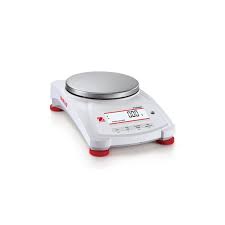The Importance of High Accuracy Balances in Various Industries
High accuracy balances play a crucial role in numerous industries where precision and reliability are paramount. Whether it’s in laboratories, pharmacies, manufacturing facilities, or research institutions, the need for accurate measurements cannot be overstated.
One of the key benefits of high accuracy balances is their ability to provide precise measurements with minimal margin for error. This is essential in industries such as pharmaceuticals, where even the slightest miscalculation can have significant consequences.
In laboratory settings, high accuracy balances are used to measure chemicals, compounds, and samples with utmost precision. Researchers and scientists rely on these instruments to ensure the validity and accuracy of their experiments and findings.
Manufacturing processes also benefit greatly from high accuracy balances. From ensuring the correct mixing of ingredients to measuring the weight of finished products, these balances help maintain quality control standards and prevent costly errors.
Furthermore, high accuracy balances are indispensable in sectors such as jewellery making, where even a fraction of a gram can make a difference in the value of the final product. Jewellers rely on precise measurements to create pieces that meet customer expectations.
Overall, high accuracy balances are essential tools that contribute to efficiency, consistency, and quality across various industries. Investing in reliable weighing equipment not only enhances productivity but also instils confidence in the integrity of processes and products.
6 Essential Tips for Ensuring High Accuracy in Balance Measurements
- Place the balance on a stable and level surface.
- Calibrate the balance regularly to ensure accurate measurements.
- Handle weights and samples with care to prevent errors in measurement.
- Avoid any air currents or vibrations that can affect the balance readings.
- Allow time for the balance to stabilize before taking measurements.
- Clean the balance frequently to remove any dust or debris that could impact its accuracy.
Place the balance on a stable and level surface.
To ensure the accuracy of measurements when using a high accuracy balance, it is crucial to place the balance on a stable and level surface. This simple yet essential tip helps to prevent any potential disturbances or vibrations that could affect the precision of the readings. By maintaining a stable and level environment for the balance, users can rely on consistent and reliable results for their weighing needs.
Calibrate the balance regularly to ensure accurate measurements.
It is essential to calibrate the balance regularly to guarantee precise measurements. Calibration helps maintain the accuracy and reliability of the balance by adjusting it to a known standard. Regular calibration ensures that the balance performs optimally, providing consistent and trustworthy results. By adhering to a calibration schedule, users can have confidence in the accuracy of their measurements, promoting quality control and reliability in various industries where precision is paramount.
Handle weights and samples with care to prevent errors in measurement.
When using a high accuracy balance, it is crucial to handle weights and samples with care to prevent errors in measurement. Even the slightest mishandling or contamination can lead to inaccurate results, impacting the reliability of data and outcomes. By exercising caution and ensuring proper handling techniques, such as using clean tools and avoiding unnecessary contact with samples, users can maintain the integrity of measurements and achieve the precision required in various industries. Remember, attention to detail in handling weights and samples is key to maximising the accuracy of high precision balances.
Avoid any air currents or vibrations that can affect the balance readings.
To ensure precise measurements with a high accuracy balance, it is crucial to avoid any disturbances such as air currents or vibrations that may impact the balance readings. Even slight movements or airflow can introduce errors and compromise the reliability of the measurements. By maintaining a stable environment free from external influences, users can maximise the performance of the balance and obtain accurate results consistently. This simple yet essential tip underscores the importance of creating an optimal setting for conducting weighing tasks with precision and confidence.
Allow time for the balance to stabilize before taking measurements.
It is crucial to allow sufficient time for the high accuracy balance to stabilize before taking measurements. This step is essential to ensure accuracy and reliability in the results obtained. By allowing the balance to settle and reach a stable state, any fluctuations or variations in weight can be minimised, leading to more precise measurements. Patience in this process can make a significant difference in obtaining consistent and trustworthy data, especially in industries where precision is paramount.
Clean the balance frequently to remove any dust or debris that could impact its accuracy.
To maintain the high accuracy of your balance, it is essential to clean it regularly to eliminate any dust or debris that may affect its precision. Dust particles or foreign materials can interfere with the balance’s mechanisms, leading to inaccurate measurements. By incorporating a routine cleaning schedule, you can ensure that your balance operates at its optimal level, providing reliable and precise results for your weighing needs.

